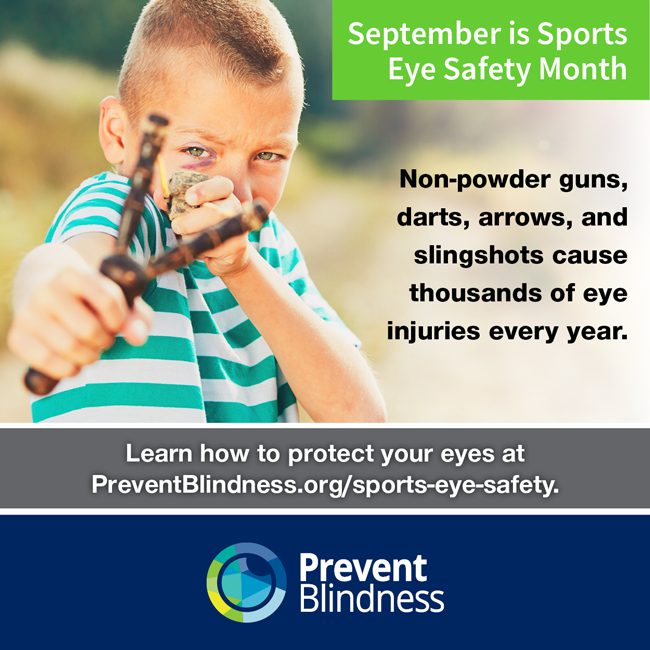September Declared as Sports Eye Safety Month by Prevent Blindness to Educate Public on Importance of Sports Eye Protection
Prevent Blindness, the nation’s leading volunteer nonprofit eye health organization, has declared September as Sports Eye Safety Month to help educate the public on the importance of wearing the proper eye protection while playing sports. Annual data from Prevent Blindness shows that there were more than 26,000 sports-related eye injuries treated in the United States last year.
The new data also showed that the category of “non-powder guns, darts, arrows, and slingshots” had the overall highest rate of eye injuries for the previous year. For children ages 0-12, “pools and water sports” had the highest rate of injuries. These types of injuries may include eye infections, irritations, scratches or trauma.
Prevent Blindness strongly recommends that athletes of any age wear protective eyewear when participating in sports. Prescription glasses, sunglasses and even occupational safety glasses do not provide adequate eye protection.
According to the American Academy of Ophthalmology (AAO), spectators at sporting events should also be careful. Balls, bats, and players can end up in the stands at any time. Spectators should keep their eyes on the game and watch out for foul balls and other flying objects. The AAO also advises that for those who already have reduced vision in one eye, check with your ophthalmologist to see what appropriate eye protection is available and whether they advise participating in any high impact or other high-risk sports.
“Wearing the proper eye protection while playing sports is essential to protecting healthy vision today and in the future,” said Jeff Todd, president and CEO at Prevent Blindness. “An eyecare professional can help to make sure you are using the correct eye protection for your sport and your individual needs.”
For more information on sports eye injury prevention, please visit Prevent Blindness at PreventBlindness.org/sports-eye-safety.

